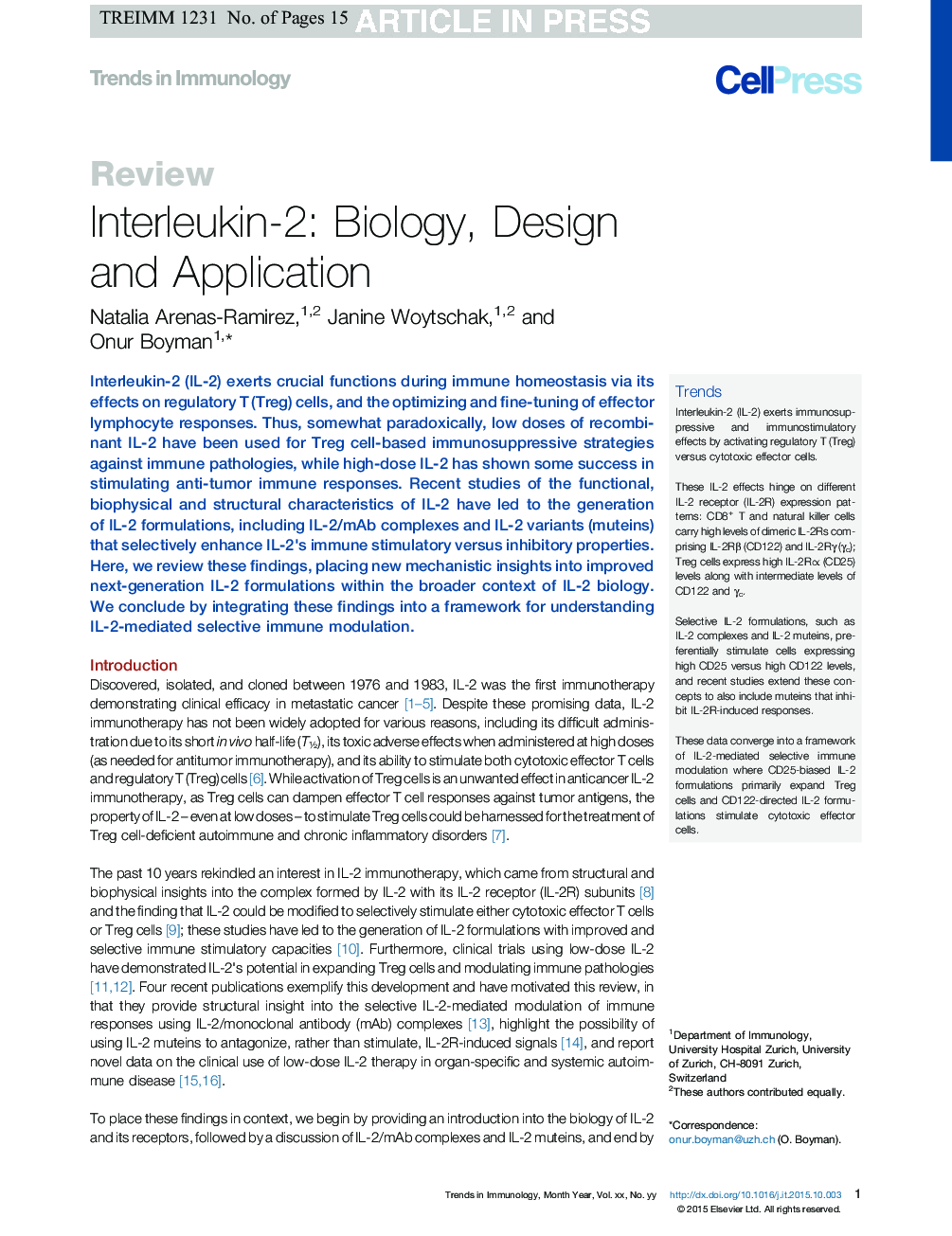| Article ID | Journal | Published Year | Pages | File Type |
|---|---|---|---|---|
| 6288249 | Trends in Immunology | 2015 | 15 Pages |
Abstract
Interleukin-2 (IL-2) exerts crucial functions during immune homeostasis via its effects on regulatory T (Treg) cells, and the optimizing and fine-tuning of effector lymphocyte responses. Thus, somewhat paradoxically, low doses of recombinant IL-2 have been used for Treg cell-based immunosuppressive strategies against immune pathologies, while high-dose IL-2 has shown some success in stimulating anti-tumor immune responses. Recent studies of the functional, biophysical and structural characteristics of IL-2 have led to the generation of IL-2 formulations, including IL-2/mAb complexes and IL-2 variants (muteins) that selectively enhance IL-2's immune stimulatory versus inhibitory properties. Here, we review these findings, placing new mechanistic insights into improved next-generation IL-2 formulations within the broader context of IL-2 biology. We conclude by integrating these findings into a framework for understanding IL-2-mediated selective immune modulation.
Related Topics
Life Sciences
Immunology and Microbiology
Immunology
Authors
Natalia Arenas-Ramirez, Janine Woytschak, Onur Boyman,
